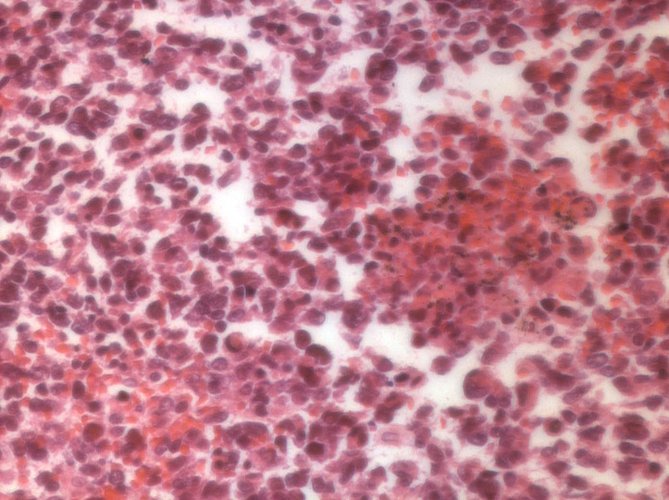

This is an oat cell carcinoma with a patch of necrosis in the center. You can recognize the necrosis by the fact that the nuclei are dark and featureless. Look especially for "nuclear dust", little dark-staining fragments of karyorrhectic nuclei.
The "correct" name today is "small cell undifferentiated carcinoma of the lung", but "oat cell" is a classic term that will probably always be popular with pathologists. Notice the round-oval cells with a central area of necrosis.
This is an extremelly malignant tumor with untreated patients often dying within a month from the time of diagnosis. Almost all victims are smokers.
The cell of origin of this tumor is the APUD cell, an epithelial cell that produces neurosecretory granules and even seems to synapse with underlying nerves.
Grossly this tumor looks and feels like sushi. This tumor cells are twice as big across as small lymphocytes and grow in groups. They possess very little cytoplasm. They do not make a fibrous stroma (hence the tumor is soft like "fish flesh".) On electron microscopy, one can see the neurosecretory granules.
This tumor is considered neuroendocrine, often producing ADH and ACTH. These cause a low blood sodium level and Cushingism, respectively.
The immune response to this tumor often cross-reacts with nervous system tissue, causing any of a host of troubling paraneoplastic effects. Most common is Eaton-Lambert syndrome, which causes weakness by acting on the myoneural junctions.
Oat cell responds well initially to chemotherapy, but cures remain unlikely at best.